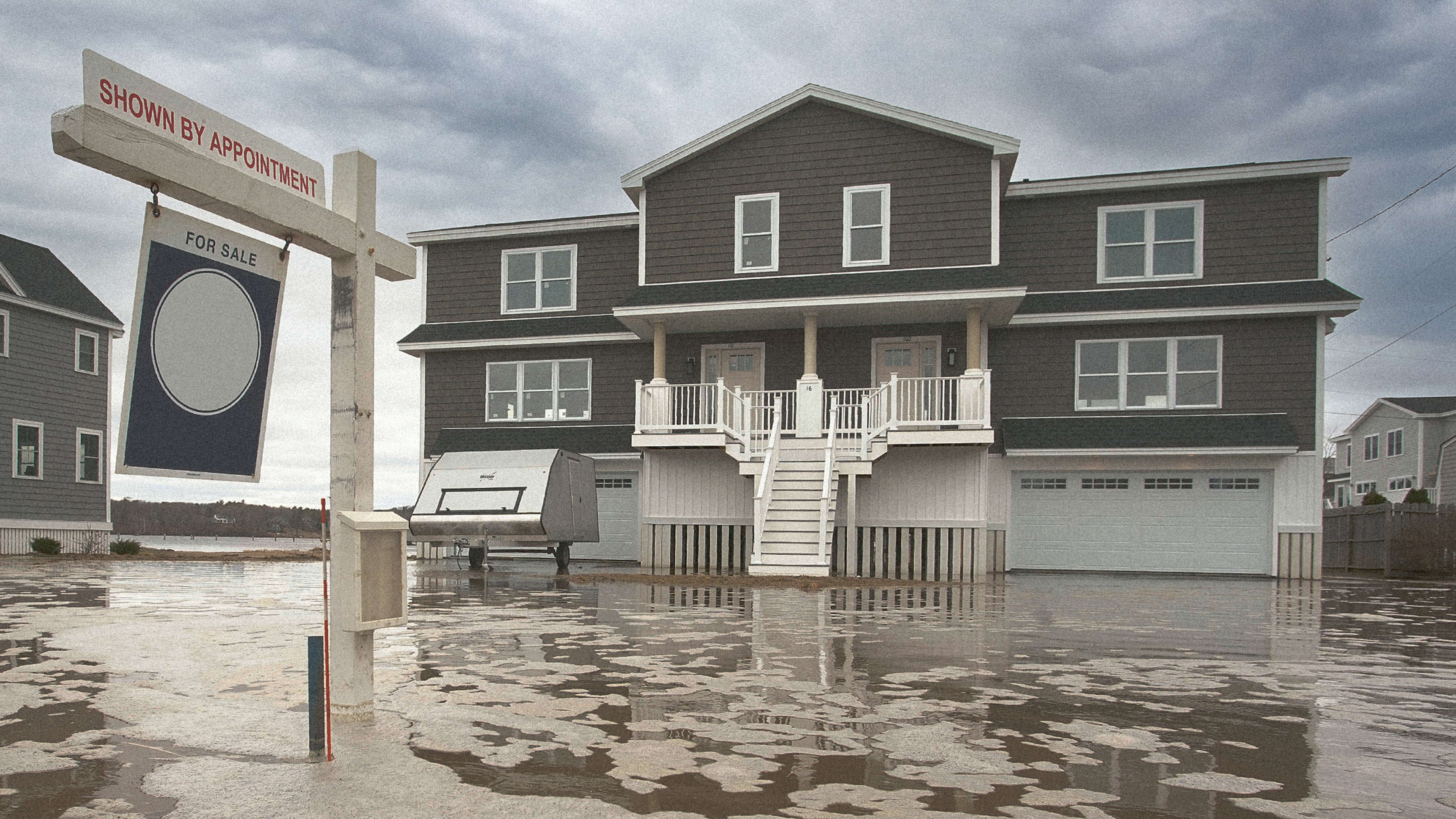A house sitting on low-lying land on the coast in Southern California can cost millions of dollars—but over the course of a 30-year mortgage, as the sea level rises, it could also become uninhabitable.
Hundreds of coastal communities in the U.S. face a similar situation. As high tides reach farther inland, chronic flooding is becoming more common. A 2018 report from the nonprofit science advocacy group Union of Concerned Scientists found that more than 300,000 homes, collectively worth around $115 billion now, would be at risk of chronic flooding by 2045. But property values aren’t dropping to reflect that risk, and residents may not want to leave until their homes flood so frequently that no one else will want to buy them.
In California, where as much as $10 billion of existing property could be fully underwater by the middle of the century and another $10 billion could be at risk from king tides, one legislator wants to try something different: a revolving loan program that would let counties and cities buy houses that are most at risk now, and then rent them out—in some cases, to the original homeowner—until it’s no longer safe to live in the area.
“We know that sea-level rise is coming and that there are going to be catastrophic effects from it,” says Julia Stein, a project director at the Emmett Institute on Climate Change and the Environment at UCLA School of Law, who helped Ben Allen, a California state senator, draft legislation proposing the buy-and-rent program. “But property valuation of the coastline doesn’t necessarily build those risks into pricing now, and may not build those risks into pricing until it’s kind of too late. So that’s why it’s important for the state to be thinking about ways to manage that risk, and all of the associated risks—not just property loss and harm to human beings living at the coast that might come as a result of a natural disaster caused by sea-level rise, but also all the things like decommissioning infrastructure at the coastline that serves coastal properties that are going to become issues as the sea level continues to rise.”
In other parts of the country, the government sometimes buys and demolishes homes that repeatedly flood in storms. In one of the most extreme cases, an entire neighborhood is relocating. Along the coasts, some communities are investing millions in infrastructure like sea walls to try to hold the water back. But at some point, “managed retreat” from a neighborhood may make more sense.
“I do think there’s a point at which managed retreat becomes the safest and best options for communities, and that could include communities in California,” says Kristina Dahl, a senior climate scientist at the Union of Concerned Scientists. “We do know that some of the communities who are most exposed to sea-level rise in the state are considering relatively drastic measures to protect themselves.” Balboa Island, a small island in Southern California, has considered raising the entire island, for example.
If the world succeeds in shifting to a net-zero economy, the worst sea-level rise can be avoided, but a certain amount is already locked in. In Southern California, by the middle of the century, the water may rise one or two feet. Other coastal states are beginning to acknowledge that some communities will have to move. A recent coastal resilience plan for Virginia talks about how to protect the coast, but also strategies that “some cases will include relocation from places that are or will become uninhabitable.”
If the government owns the property, it can help alleviate some of the financial burden for residents. “It takes a lot of that risk off of the shoulders of the individual property owner, which then potentially frees them up to move to another place when they feel ready to,” says Dahl. It could be particularly useful for lower-income homeowners who can’t easily stay somewhere else when their home floods or pay for repairs; not every coastal home is a vacation house in Malibu.
The proposed program would also help the government plan for larger changes. “Getting ahead of the problem allows the state to try to consolidate ownership of property at the coastline long in advance of needing to decommission the infrastructure that serves it,” Stein says. “So it can start to plan ahead instead of having to do those things in an emergency situation . . . If the state is managing the property, at a certain point, they can say, okay, it’s no longer safe for us to be inhabiting this property.”
Recognize your brand’s excellence by applying to this year’s Brands That Matter Awards before the early-rate deadline, May 3.
